
http://www.iaeme.com/IJM/index.as 171 editor@iaeme.com
International Journal of Management (IJM)
Volume 8, Issue 2, March – April 2017, pp.171–187, Article ID: IJM_08_02_019
Available online at
http://www.iaeme.com/ijm/issues.asp?JType=IJM&VType=8&IType=2
Journal Impact Factor (2016): 8.1920 (Calculated by GISI) www.jifactor.com
ISSN Print: 0976-6502 and ISSN Online: 0976-6510
© IAEME Publication
A MARKET ANALYSIS ON THE IMPACT OF
ADDITIVE LAYER MANUFACTURING
TECHNOLOGIES ON AEROSPACE AND
DEFENSE SUPPLY CHAIN
K. Narsimlu
Aerospace MBA Delegate, Toulouse Business School, Toulouse, France and Indian Institute
of Management, Bangalore, India and Research Assistant, Aerospace Information
Technology, Space Technology, Julius Maximilian University of Würzburg, Würzburg,
Germany
Dr. Ardhendu G. Pathak
VP and Head, Emerging Technologies & Concepts,
Airbus R&T, Airbus Group, Bangalore, India
Prof. Avinash G. Mulky
Professor, Marketing, Indian Institute of Management, Bangalore, India
Chandrashekhar Yavarna
Aerospace MBA Delegate, Toulouse Business School, Toulouse,
France and Indian Institute of Management, Bangalore,
India and Sourcing Leader, GE Aviation, Pune, India
ABSTRACT
The manufacturing technologies are undergoing industrial revolution, primarily by
significant advances in additive layer manufacturing (popularly known as 3D Printing)
technologies. Instead of taking material out through conventional processes one builds
desired parts by precisely adding one layer over another. This results in parts that are
lighter, have almost zero wastage and afford flexibility to design parts not possible to
manufacture using conventional technologies. Using this technology, the parts can be
manufactured close to where they are needed and when they are needed. This can have
significant impact on global supply chain operations, inventory control, labor arbitrage
in the manufacturing sector, remanufacturing, and parts management. The technology
significantly impacts the supply chain evolution by means of demand uncertainty,
logistics optimization, increased flexibility, increased responsiveness, and required
inventory reduction for production. Supply chain disintermediation, customer
empowerment, co-creation and mass customization are other benefits. This paper
describes about the technology of additive layer manufacturing and its relevance to

K. Narsimlu, Dr. Ardhendu G. Pathak, Prof. Avinash G. Mulky and Chandrashekhar Yavarna
http://www.iaeme.com/IJM/index.as 172 editor@iaeme.com
supply chain. It also provides the existing and potential future stakeholders. It provides
the key factors which are influencing the business case of additive layer manufacturing
on aerospace and defense supply chain. It explains the drivers of supply chain
operations in terms of economic factors, resource, raw material, machine, tooling,
quality, scaling, distribution and maintenance support. It also describes the trends on
changes in sourcing & supply chain due to additive layer manufacturing in other
industry sectors. It provides the technical, legal, financial and political implication
assessment. It explains about the competitor footprint and extent of adoption of
technology. It concludes the analysis of the impact of additive layer manufacturing
technologies on aerospace and defense supply chain.
Key words: Additive Layer Manufacturing, Aerospace and Defense, Breakeven
Analysis, Computer Aided Design, 3D Printing, Fused Deposition Modelling, Selective
Laser Sintering, STereoLithography, Supply Chain, SWOT Analysis, Technology
Maturity Curve, Technology Readiness Levels
Cite this Article: K. Narsimlu, Dr. Ardhendu G. Pathak, Prof. Avinash G. Mulky and
Chandrashekhar Yavarna, A Market Analysis On The Impact of Additive Layer
Manufacturing Technologies On Aerospace and Defense Supply Chain. International
Journal of Management, 8(2), 2017, pp. 171–187.
http://www.iaeme.com/IJM/issues.asp?JType=IJM&VType=8&IType=2
1. INTRODUCTION
The manufacturing technologies are undergoing industrial revolution, led primarily by
significant advances in Additive Layer Manufacturing (ALM) (popularly known as 3D
Printing, 3DP). The first industrial revolution is the mechanization of the textile industry,
tasking previously done laboriously by hand to the cotton mill. The second industrial revolution
is the moving assembly line to mass production. Now, the third industrial revolution is taking
material out through conventional processes to builds desired parts by precisely adding one
layer over another. This results in parts that are lighter, have almost zero wastage and afford
flexibility to design parts not possible to manufacture using conventional technologies [1].
Using this ALM technology, the parts can be manufactured close to where they are needed
and when they are needed. This can have significant impact on global supply chain operations,
inventory control, labor arbitrage in the manufacturing sector, remanufacturing, and parts
management. The technology significantly impacts the supply chain evolution by means of
demand uncertainty, logistics optimization, increased flexibility, increased responsiveness, and
required inventory reduction for production. Supply chain disintermediation, customer co-
creation, customer empowerment and mass customization are other benefits.
In this paper, sections are organized as follows: Section 1, Introduction. Section 2, The
Impact of Additive Layer Manufacturing Technologies on Aerospace and Defense Supply
Chain. Section 3, Existing and Potential Future Stakeholders in Additive Layer Manufacturing
Technology. Section 4, Key Factors Influencing the Business Case of Additive Layer
Manufacturing Technology on Aerospace and Defense Supply Chain. Section 5, Key Drivers
of Additive Layer Manufacturing Technology on Aerospace and Defense Supply Chain.
Section 6, Trends on Changes in Supply Chain due to Additive Layer Manufacturing
Technology. Section 7, Trends on Changes in Supply Chain due to Additive Layer
Manufacturing Technology in Industry Sectors. Section 8, Case Studies of Additive Layer
Manufacturing Technology on Aerospace and Defense Supply Chain. Section 9, The
Competitor Footprint and Its Extent of Adoption of Additive Layer Manufacturing Technology
in Aerospace and Defense Industry. Section 10, SWOT Analysis and Indicators of Future
Growth. Section 11, Conclusions.

A Market Analysis On The Impact of Additive Layer Manufacturing Technologies On
Aerospace and Defense Supply Chain
http://www.iaeme.com/IJM/index.as 173 editor@iaeme.com
2. THE IMPACT OF ADDITIVE LAYER MANUFACTURING
TECHNOLOGIES ON AEROSPACE AND DEFENSE SUPPLY CHAIN
This section explains about the impact of ALM technologies on the aerospace and defense
supply chain in detail.
The ALM is a process of manufacturing technique that creates an object from electronic
design file (3D model) such as STL (Stereo Lithography) file using Computer Aided Design
(CAD), the software model into cross-sectional layers until the final object emerges, using raw
materials such as metals, titanium powder, polymers, plastics and composites [2].
The ALM process flow, is as shown in Fig. 1.
Figure 1 Additive Layer Manufacturing Technology Process Flow [2]
The ALM adoption timeline, the shift of ALM applications milestones in Aerospace and
Defense industry [2], are as shown in Fig. 2.
Figure 2 Additive Layer Manufacturing Technology Adoption Timeline [2]
The ALM Technology Readiness Levels (TRL) and impact on aerospace and defense
industry [2], are as shown in a Table. 1.

K. Narsimlu, Dr. Ardhendu G. Pathak, Prof. Avinash G. Mulky and Chandrashekhar Yavarna
http://www.iaeme.com/IJM/index.as 174 editor@iaeme.com
Table 1 Additive Layer Manufacturing Technology Readiness Levels vs Timeline [2]
Timeline ALM Technology
Readiness Levels ALM Milestones
Impact on Aerospace
and Defense Supply
Chain
1986 1 Stereolithography (SLA) Rapid Prototyping
1989 1.5 Fused Deposition
Modeling (FDM) Rapid Prototype System
2004 2 - Component Manufacture
2007 3
Replication Rapid-
Prototype Project
(RepRap) Movement
Real-time Spare Parts
Manufacture
2008 3.5 User Generated Art -
2009 3.5
FDM Patent Expires,
Growth in Consumer
3DPs
-
2011 4 -
Southampton University
Laser Sintered Aircraft
(SULSA) Prototype
2012 4.5 -
3D System Acquires Z
Corp. GE Acquires
Morris Technology
2014 4.5 Selective Laser Sintering
(SLS) Patent Expires -
2016 5 - Mass Production CFM
LEAP Engine
2030 6 - Completed Product
2040 6.5 - Completed Product
2050 7 - Completed Product
The ALM technology maturity curve, based on technology readiness levels vs timeline, is
as shown in Fig. 3.
Figure 3 Additive Layer Manufacturing Technology Maturity Curve [2]

A Market Analysis On The Impact of Additive Layer Manufacturing Technologies On
Aerospace and Defense Supply Chain
http://www.iaeme.com/IJM/index.as 175 editor@iaeme.com
The ALM technology on Gartner’s Emerging Technologies Hype Cycles [2], is as shown
in Fig. 4.
Figure 4 Additive Layer Manufacturing Technology on Gartner’s Emerging Technologies Hype
Cycle [2]
The global market size and forecast of ALM [2], is as shown in Fig. 5.
Figure 5 Additive Layer Manufacturing Technology Global Market Size and Forecast [2]

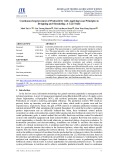


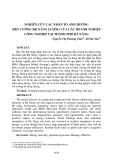

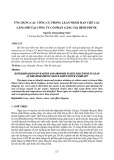

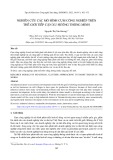

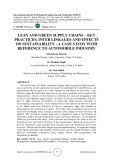







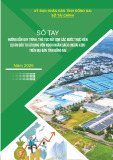
![20 câu hỏi Quản lý dự án phần mềm có đáp án [mới nhất]](https://cdn.tailieu.vn/images/document/thumbnail/2025/20251003/hieu2004haha@gmail.com/135x160/78791759734259.jpg)


![Tài liệu Quản lý dự án: Kiến thức nền tảng toàn diện [chuẩn SEO]](https://cdn.tailieu.vn/images/document/thumbnail/2025/20250910/kimphuong1001/135x160/92631757496585.jpg)



